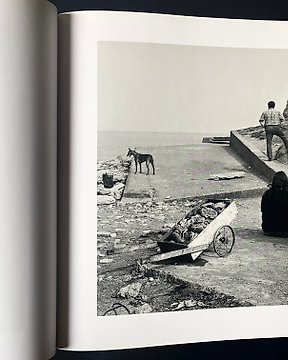
Chris Killip - Chris Killip : In Flagrante Two - 2016
编号 83035165

编号 83035165

A Harlem family 1967 - Gordon PARKS
Steidl 2012 - Edition toilée sous jaquette.
In 1967, Life sent three correspondents into the field to document the living conditions that Black families endured in America’s ghettos. While his white colleagues Gerald Moore and Jack Newfield produced broad studies of Chicago’s West Side and the Bedford-Stuyvesant section of Brooklyn, Parks concentrated on a single family in Harlem, the Fontenelles.
With winter approaching, British West Indies immigrant Norman Fontenelle, Sr., and his wife, Bessie, were falling short in their efforts to scrape together enough to feed their nine children. Jobless and frustrated, Norman Sr. would drink and then beat Bessie. With no food to offer, Bessie could not prevent her youngest child, three-year-old Richard, from eating the plaster that fell from the walls of their tiny dirt-covered apartment. On Thanksgiving, Parks photographed the family huddled around an empty oven, trying to stave off the cold with their only source of heat. The image selected for the cover of the March 8, 1968 issue of Life is one of Parks’s most arresting: a wailing five year-old Ellen Fontenelle, with a tear fully formed at the bottom of one eye, just before it descends her cheek.
These photographs—and the experience of taking them—compelled Parks to write a remarkable introductory text for the article, a desperate plea for the nation to set aside bigotry for a more hopeful future:
The Fontenelle Family, 1967 - Photography Archive - The Gordon Parks Foundation
Untitled, Harlem, New York, 1967
We are not so far apart as it might seem. There is something about both of us that goes deeper than blood or black and white. It is our common search for a better life, a better world. I march now over the same ground you once marched. I fight for the same things you still fight for. My children’s needs are the same as your children’s. I too am America. America is me. It gave me the only life I know—so I must share in its survival. Look at me. Listen to me. Try to understand my struggle against your racism. There is yet a chance for us to live in peace beneath these restless skies.
Life readers responded with an outpouring of kindness and generosity to the Fontenelles. They contributed enough money to move the family into a small house on Long Island where the children would have access to fresh air and a better education.
Sadly, the hope these changes offered the family was short-lived. Three months after their relocation, Norman Sr. came home drunk and dropped a lit cigarette onto the family’s new sofa. Fire swept through the house, killing him and his son Kenneth. Though the rest of the family escaped with their lives, their home was burned to the ground. Bessie, now a single parent, returned woefully to Harlem. Parks visited her several years later on Christmas Eve, to find that the family had fallen apart. Two sons were in prison, one for selling drugs, another for stealing; three of her teenage daughters were “on the streets.” When Bessie died in 1992, Parks attended the funeral along with four of her children, two of whom would die from AIDS soon after. Norman Jr. died in prison, where he had mourned the passing of his parents and his siblings.